How Does Wireless Charging Work: A Helpful Guide Leave a comment
In today’s ever-evolving tech landscape, wireless charging has gained remarkable popularity, revolutionizing the way we power our devices. This comprehensive guide delves into how does wireless charging work. from its fundamental principles to its integration with leading tech giants like the iPhone, Samsung, and Apple. We will explore the Qi wireless charging standard, the key components of wireless chargers, and the future trends shaping this technology.
Wireless chargers offer unparalleled convenience and efficiency, liberating users from the hassles of tangled cords and worn-out charging ports. As we delve into this guide, you will gain insights into the underlying technologies and discover how wireless charging is poised to transform the future of charging solutions.
How Does Wireless Charging Work?
Fundamental Concepts of Wireless Charging
Wireless charging is based on the principle of transferring electrical energy without the need for physical connectors. It relies on the transmission of power through electromagnetic fields.
Electromagnetic Fields in Wireless Charging
Electromagnetic fields play a pivotal role in wireless charging. Learn how these fields are generated and harnessed to deliver power to your devices wirelessly.
Distinction Between Wireless and Traditional Wired Charging
Explore the key differences between wireless charging and traditional wired charging, including the pros and cons of each approach.
-
Product on sale
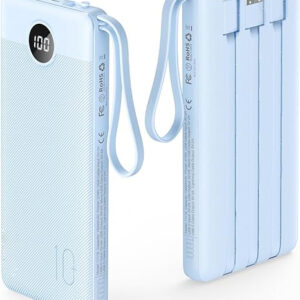 10000mAh Power Bank With Built-in Cables$46.99
10000mAh Power Bank With Built-in Cables$46.99$49.99 -
Product on sale
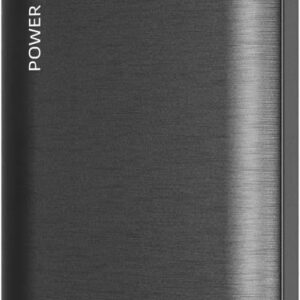 10000mAh Mobile Phone Power Bank Compatible with Huawei, iPhone & Andriod$37.84
10000mAh Mobile Phone Power Bank Compatible with Huawei, iPhone & Andriod$37.84$39.99 -
 The Smallest & Lightest 10000mAh External Battery Powerbank$45.99
The Smallest & Lightest 10000mAh External Battery Powerbank$45.99 -
Product on sale
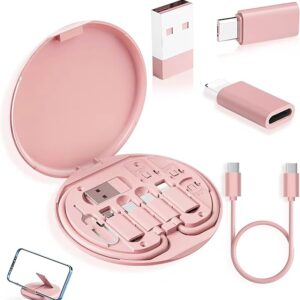 Multi Charging Cable Storage Box$19.99
Multi Charging Cable Storage Box$19.99$22.18
Wireless Charger Components
Key Components of a Wireless Charger
Uncover the essential components of a wireless charger, such as the transmitter (charging pad or base), receiver (device to be charged), inductive coils, and power source.
How Components Work Together
Delve into the intricate interplay of these components to understand how they collaborate to enable seamless wireless charging.
Qi Wireless Charging Standard
Introduction to Qi Wireless Charging Standard
Discover the Qi wireless charging standard, widely recognized as the industry benchmark for wireless charging technology.
Ensuring Compatibility with Qi
Learn how Qi technology ensures compatibility between devices and chargers, simplifying the charging experience for consumers.
Advantages of Qi-Certified Chargers
Explore the advantages of opting for Qi-certified chargers, from enhanced safety to improved charging efficiency.

How Does Wireless Charging Work with iPhones
Apple’s Adoption of Wireless Charging
Understand how Apple has embraced wireless charging technology in its product lineup.
iPhone Compatibility with Wireless Chargers
Find out which iPhone models are compatible with wireless chargers and how to identify if your device supports wireless charging.
Step-by-Step Guide to Wireless Charging an iPhone
Follow a comprehensive guide outlining the steps to wirelessly charge your iPhone, ensuring a hassle-free experience.
Samsung Wireless Charger
Samsung’s Role in Wireless Charging
Explore Samsung’s contributions to the world of wireless chargers, including their popular devices that support this technology.
Unique Features in Samsung Wireless Chargers
Learn about any distinctive features or technologies Samsung employs in its wireless charging solutions.
Apple Wireless Charger
Apple’s Innovations in Wireless Charging
Discover Apple’s innovative strides in wireless charging, with a spotlight on products like MagSafe.
Special Features of Apple’s Wireless Charging Ecosystem
Uncover the unique benefits and features of Apple’s wireless charging ecosystem that set it apart from the competition.
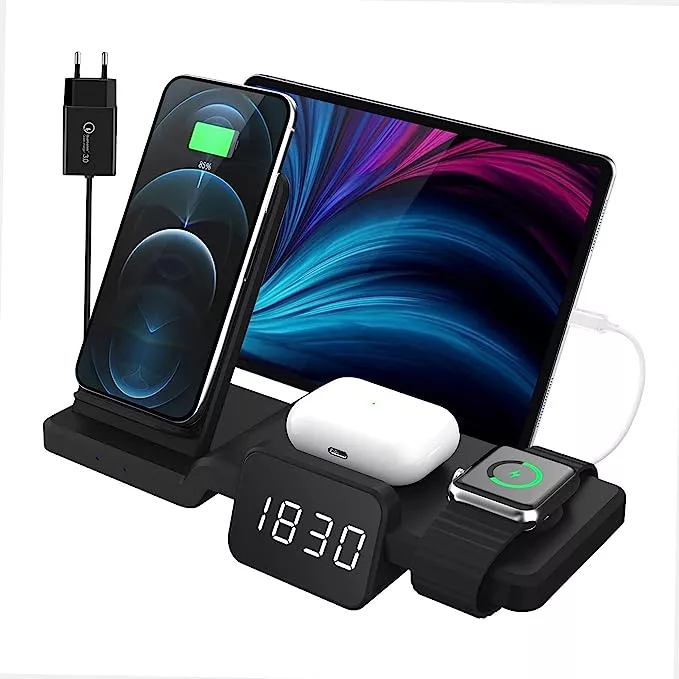
Benefits and Limitations of Wireless Charging
Advantages of Wireless Charging
Enumerate the advantages of wireless charging, including convenience, reduced wear and tear on charging ports, and an enhanced user experience.
Addressing Common Concerns
Address common concerns related to wireless charging, such as charging speed, efficiency, and device compatibility. Offer tips to maximize the benefits of wireless charging.
Future Trends in Wireless Charging
Ongoing Developments in Wireless Charging Technology
Discuss the latest advancements and ongoing developments in wireless charging technology.
Emerging Trends in Wireless Charging
Highlight emerging trends like longer-range wireless charging and increased charging speeds, shedding light on their potential impact on the tech industry and consumers.
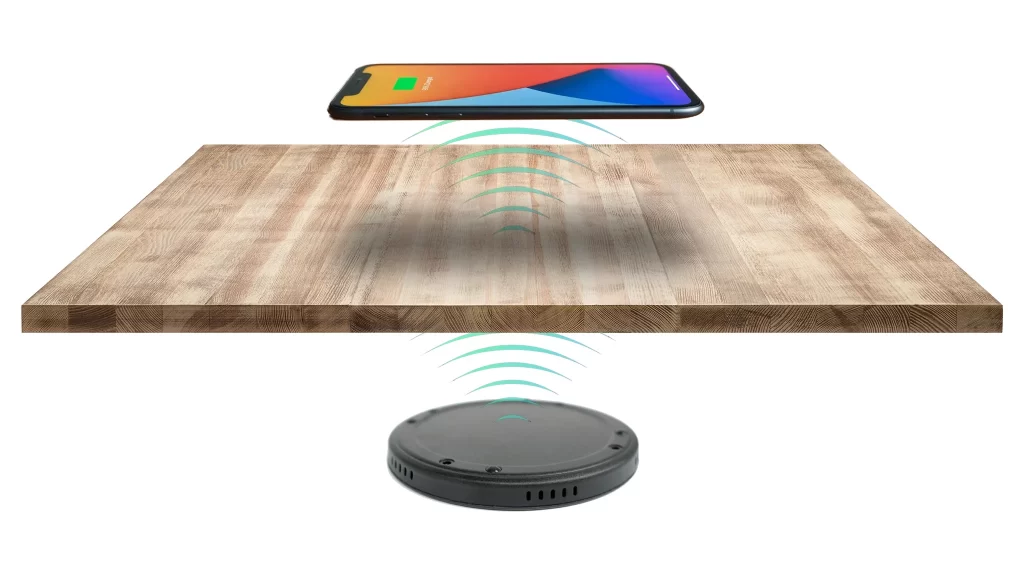
About Rochas Divine Mart
Rochas DivineMart is the ultimate destination for men’s fashion, women’s fashion( Women’s Blouses, Women’s Hoodies, Women’s Shirts), lifestyle, clothing, Footwear, accessories(Women’s Hats, Women’s Belts, Women’s Boots, Women’s Wallets, Women’s Socks), personal care products, and more categories. You can shop online at Rochas Divinemart. From the comfort of your home, get your favorites delivered right to your doorstep.
Conclusion
In conclusion, how does wireless charging work? Wireless charging has ushered in a new era of convenience and efficiency, reshaping the way we power our devices. Embrace this technology for its sustainability and user-friendly experience, and remember the importance of using certified chargers for a seamless and secure charging process.
References
Throughout this guide on how does wireless charging work. We have drawn from authoritative sources and articles to provide you with accurate and up-to-date information. For device-specific details, please refer to the respective manufacturer websites, and stay tuned for any recent developments in the world of wireless charging.
Wireless Charging FAQs
Do wireless chargers work for any phone?
Wireless chargers are compatible with many modern smartphones that support wireless charging, but not all phones are compatible. Check your phone’s specifications to ensure compatibility.
How does a wireless charger work?
Wireless chargers use electromagnetic fields to transfer energy between the charger and the device. The charger generates a magnetic field, which induces a current in the receiver coil inside the phone, thus charging the battery.
Are wireless chargers safe?
Yes, wireless chargers are generally safe to use. They adhere to safety standards and have built-in features to prevent overheating and overcharging. However, it’s important to use quality chargers and follow manufacturer guidelines.
How fast is wireless charging?
The charging speed of wireless chargers varies depending on the device and charger. Some can deliver fast charging comparable to wired charging, while others may be slower.
What are the disadvantages of wireless charging?
Wireless charging can be slower than wired charging, and the phone must be placed precisely on the charger. Additionally, some wireless chargers may generate more heat during charging.
Is wireless charging better than wired?
It depends on your preferences and needs. Wireless charging offers convenience and eliminates the need for cables, but may be slower. Wired charging tends to be faster but requires a physical connection.
What are the benefits of wireless charging?
Wireless charging is convenient, reduces cable clutter, and allows for easy one-handed charging. It’s also more durable, as there’s no wear and tear on charging ports.
Is it OK to leave the phone on a wireless charger all day?
Yes, it’s generally safe to leave your phone on a wireless charger all day. Modern chargers and phones have safety features to prevent overcharging. However, prolonged exposure to heat may affect battery health.
Will wireless charging damage the battery?
Wireless charging, when done correctly, won’t damage the battery. In fact, it can be gentler on the battery compared to frequent plugging and unplugging.
Are wireless chargers safer than wired ones?
Both wireless and wired chargers are generally safe when used properly. However, wireless chargers may have an advantage in reducing wear and tear on charging ports, which can be a point of failure in wired charging.













